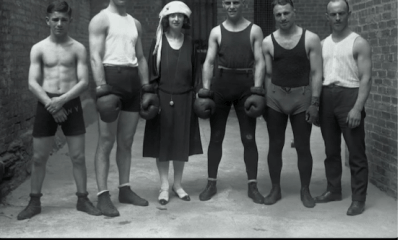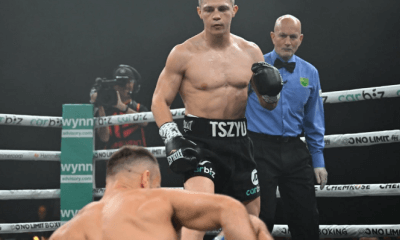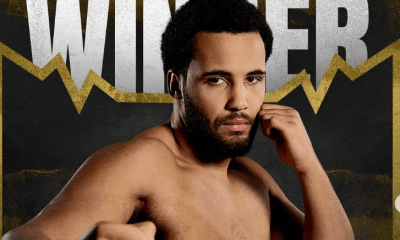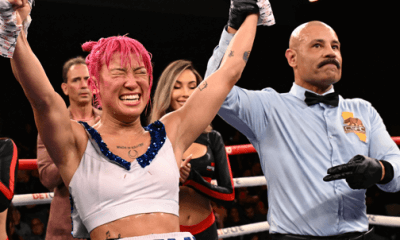Featured Articles
Prominent Trainer Ronnie Shields Reflects on a Life in Boxing
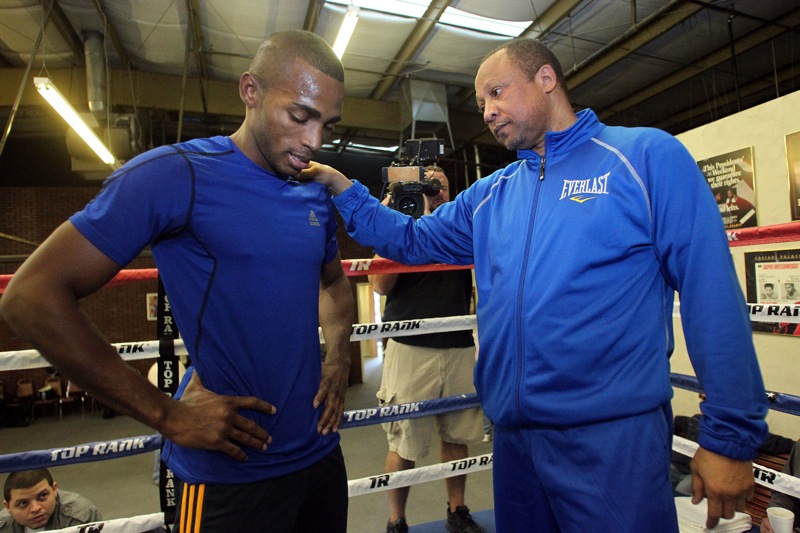
Ronnie Shields never thought boxing would be his life.
After a stalwart amateur career consisting of over 260 bouts and 33 professional fights, Shields called it quits in 1988 only to be called into action to work the pads as a trainer for various boxers in Houston that he called friends.
Shields (pictured with junior middleweight title-holder Erislandy Lara) had always loved working with other fighters, even when he was a fighter himself.
“When I was an amateur fighter we had like 35 fighters and only five coaches. So what they used to do is make us do pads with each other. I really liked doing that. We had to work each other’s corners.”
In the professional ranks, nothing changed.
“Even when I turned pro, I was helping guys out and making game plans and stuff like that. I’ve always done it.”
But when Shields stopped fighting after a unanimous decision loss to William Releford in 1988, he thought his time in the sport was over. He didn’t even bother to talk to anyone about his decision. The final fights of his career were just too painful. He had too many injuries. He couldn’t throw a good jab anymore. He needed cortisone injections just to make it to the ring for his last ten fights.
“I didn’t consult with anybody but myself.”
Shields went out to get a job like regular people do but his friends just kept calling him to work the pads. One day, Lou Duva came to visit Willie Savannah’s gym in Houston. He saw Shields working the pads with various fighters and asked him if he’d like to come work with his stable of fighters at Main Events, including Evander Holyfield and Mark Breland. Shields was surprised at the offer but remained undeterred.
“I said nah, I’ll just get me a job.”
But persistence paid off. Duva was back a month later with the same offer. Perhaps seeing the work of fate in his life, Shields decided to give it a go.
“I didn’t know if I wanted to do this for the rest of my life, but I decided to try it.”
The first day Shields was sent to work eight rounds of pads with then heavyweight champion Evander Holyfield. Holyfield loved the way the two worked together. The champ told Shields it was exactly the kind of thing he needed to be ready for his next fight. Soon, other fighters were getting in on what Shields had to offer.
“I must of done 50 rounds of pads that day. It just stuck.”
The rest is history. Shields knows his life is boxing now. He said he’s happy with the decision he made back in 1988 to retire and even happier to have accepted Duva’s offer to help train his fighters.
“I know this is my life now. There’s nothing else.”
Shields’ first go at being lead trainer was with Vernon Forrest back in 1989. Forrest was good friends with Holyfield and came to the gym one day to spar stable mate Pernell Whitaker.
“Holyfield asked me to do the pads with [Forrest]. We became tight, and he called me up and asked me to be his trainer.”
Today, Shields’ stable of fighters at Plex boxing gym in Houston includes Lara, who risks his world title against undefeated Terrell Gausha at Barclays Center on Oct. 14, and middleweight contender Jermall Charlo, who recently vacated his junior middleweight crown to move up in weight to 160.
What started as just some pad work with random fighters at a boxing gym turned into Shields lifetime legacy. He was the World Boxing Hall of Fame’s Trainer of the Year in 2003. Today he is one of the most well-known trainers in boxing.
Shields said his time as a professional fighter helps him know what to do for his fighters and how best to be his fighters’ advocate.
“I remember that like it was yesterday,” said Shields about his first loss in 1981. “It shouldn’t have been a loss. We went to Mexico City. My manager was good friends with this guy he knew…so they decided to go to Mexico City.”
The decision turned into an unwinnable fight in the suffocating altitude of Mexico City.
“We didn’t know how high the attitude was. We figured a week was good to go and get acclimated but the first time we ran I almost died.”
Undefeated at the time, Shields remembers how quickly his body fell apart as the rounds of the fight progressed. If only he had an advocate like he’s become for his fighters. Shields said he would never bring a fighter to such high altitude without going down two or three weeks early to acclimate.
“It was crazy. I remember in the fight, the first round I almost stopped the guy. In the second round, the same thing [happened]. I was killing this dude.”
The referee was about the stop the fight, but he let the Mexican fighter continue.
“In the fourth round, I couldn’t breathe at all. I was sucking air. I couldn’t do nothing. I went back to the corner and said I couldn’t breathe so we stopped it in between rounds.”
Shields said he wished he had a manager and trainer back then that knew the kinds of things he knows now. Shields said he had to learn the hard way, but that his fighters today benefit from that knowledge.
“I know a fighter needs two or three weeks in a place like that.”
Shields was a professional fighter for eight years. His overall record was 26-6-1 and he twice challenged for the WBC junior welterweight championship. Since then, he has taken the hard luck lessons he learned as a fighter into teaching. He has been a boxing trainer for almost thirty years and has worked with some of the best fighters in the business including Holyfield, Whitaker, Forrest, Mike Tyson and Arturo Gatti. Boxing is Shields’ life and it’s been a very good one.
“I’m in it for good now. This is it. I’m too old to do something else.”
Check out more boxing news on video at The Boxing Channel.
-

 Featured Articles4 weeks ago
Featured Articles4 weeks agoThe Hauser Report: Zayas-Garcia, Pacquiao, Usyk, and the NYSAC
-
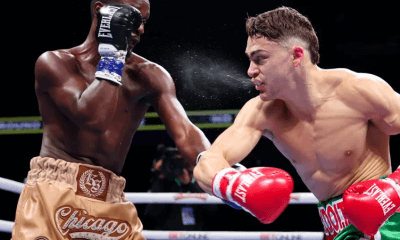
 Featured Articles3 weeks ago
Featured Articles3 weeks agoOscar Duarte and Regis Prograis Prevail on an Action-Packed Fight Card in Chicago
-
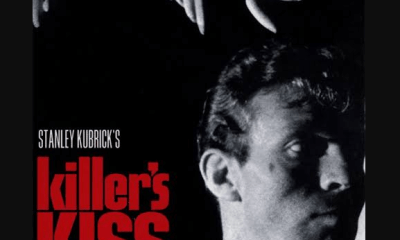
 Featured Articles2 weeks ago
Featured Articles2 weeks agoThe Hauser Report: Cinematic and Literary Notes
-
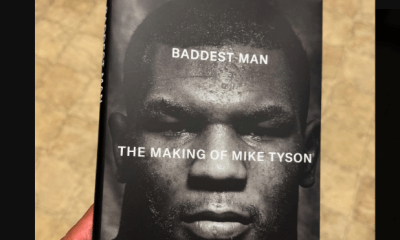
 Book Review2 weeks ago
Book Review2 weeks agoMark Kriegel’s New Book About Mike Tyson is a Must-Read
-

 Featured Articles4 weeks ago
Featured Articles4 weeks agoRemembering Dwight Muhammad Qawi (1953-2025) and his Triumphant Return to Prison
-
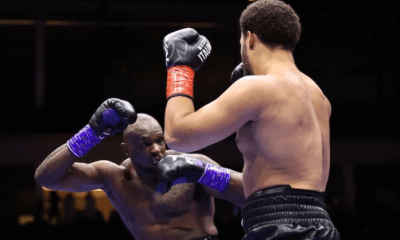
 Featured Articles7 days ago
Featured Articles7 days agoMoses Itauma Continues his Rapid Rise; Steamrolls Dillian Whyte in Riyadh
-
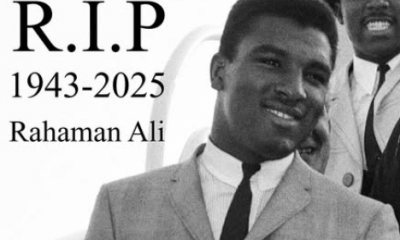
 Featured Articles3 weeks ago
Featured Articles3 weeks agoRahaman Ali (1943-2025)
-

 Featured Articles3 weeks ago
Featured Articles3 weeks agoTop Rank Boxing is in Limbo, but that Hasn’t Benched Robert Garcia’s Up-and-Comers




